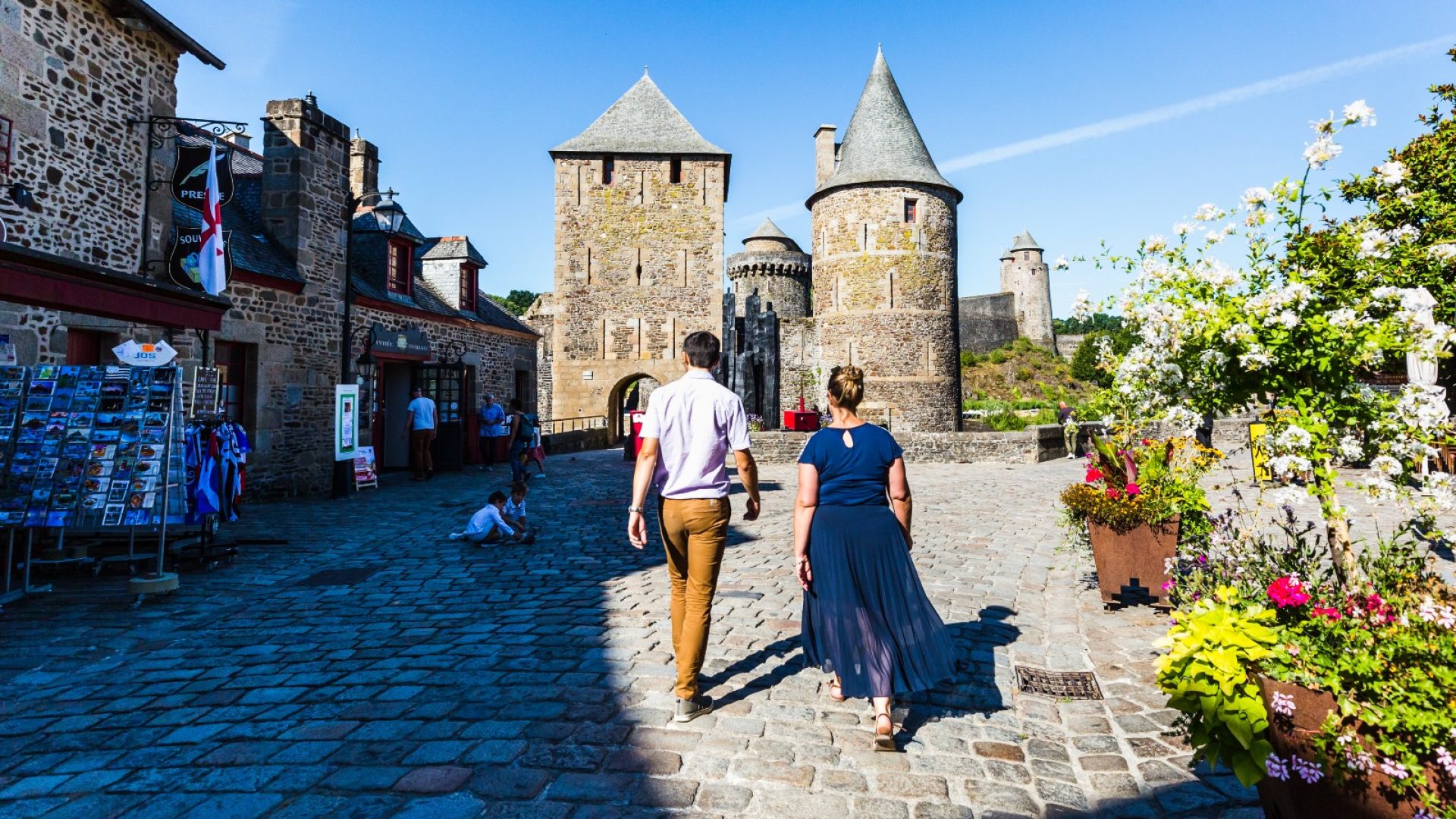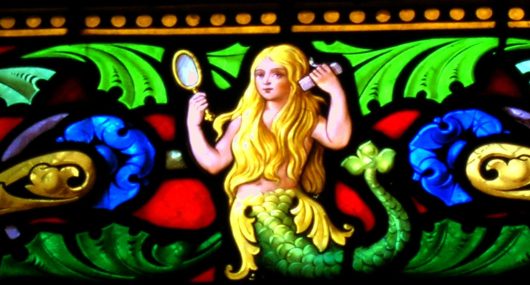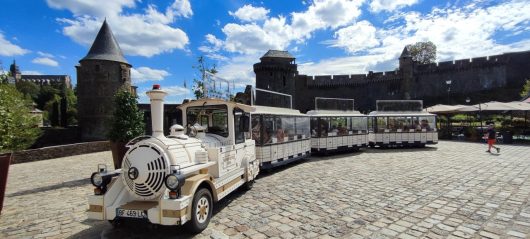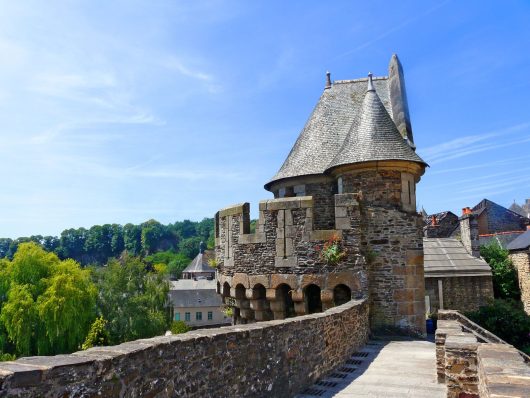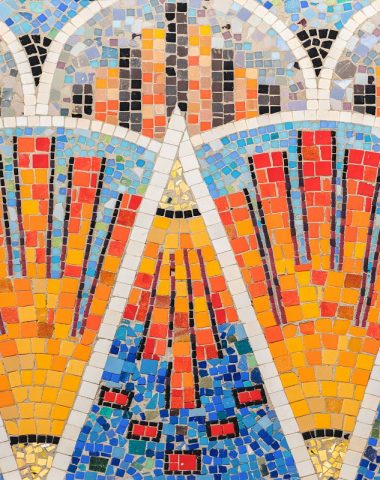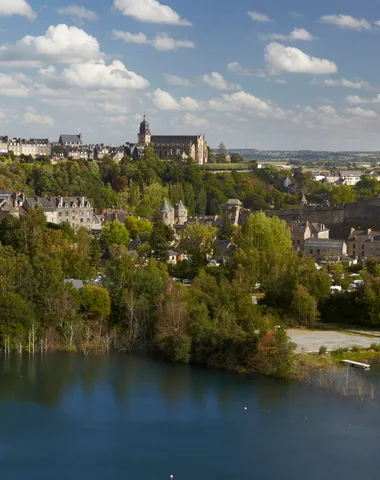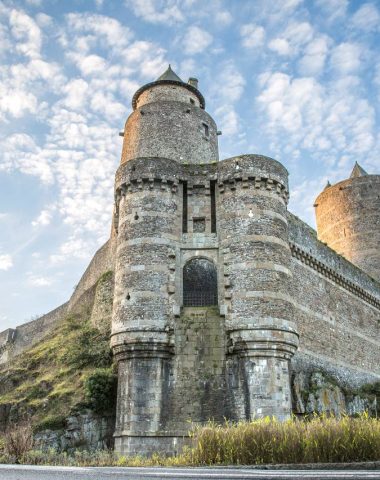Many nuggets are to be discovered in the Medieval City of Fougères! Between time travel and breathtaking panoramas, explorers eager for discovery will be surprised during their excursion by the architectural diversity and historical richness of the city.
1. Departure: Place du Théâtre
Welcome to Fougères, City of Art and History. To discover the city, we invite you to take this 2km long discovery trail, following the brown signs “Circuit Découverte de la Ville”. Opposite you stands the Victor Hugo theatre, witness to the development of industrial city and recreation. This Italian theater was inaugurated in 1886.
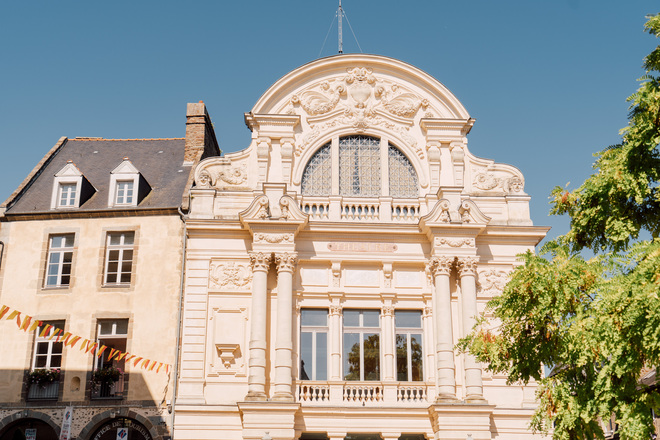
Next to it is our Tourist Office. Do not hesitate to cross our doors to receive valuable advice and to collect the paper document of this circuit.
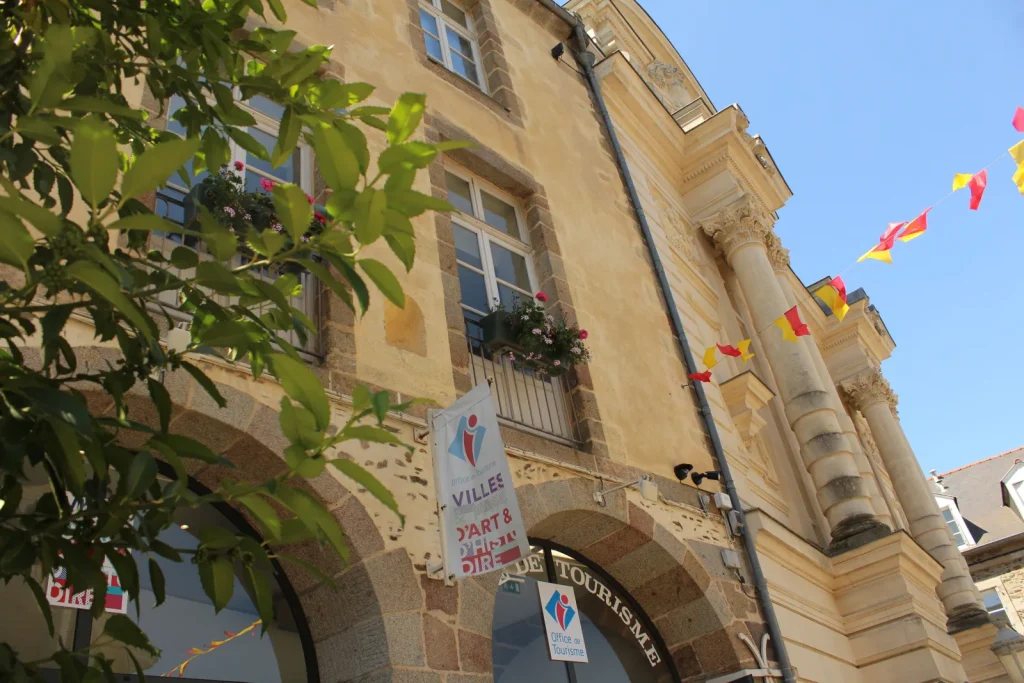
2. Rue Nationale and its belfry
Continue your visit on the left by taking the National Street. Following a series of fires in the XNUMXth century, the old medieval houses on the street gave way to granite residences and mansions.

In the middle of the latter, take the time to pause to admire on your right the Belfry of Fougères. Older Belfry of Brittany, the latter was built in the XNUMXth century by the bourgeois of the city as a symbol of
their economic power. The bell has punctuated the life of the city for more than 600 years.
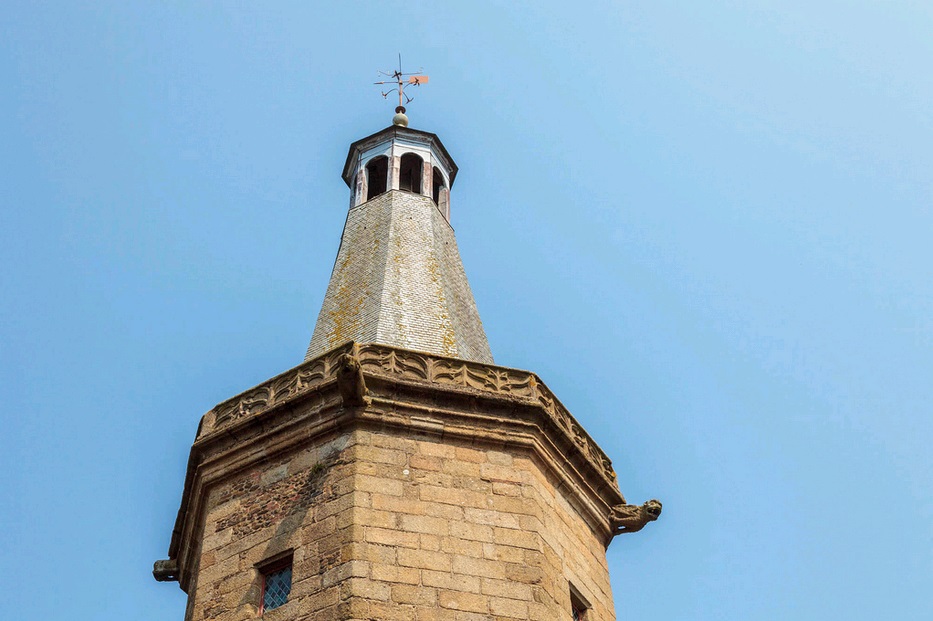
3. The Watchmaking Museum Workshop
Continuing down the street, on your left is “L'Atelier Musée de l'Horlogerie”. In his workshop, the watchmaker, Mr. Le Floche works in front of your eyes, with unequaled precision and makes you discover his trade. Through the exhibition of building clocks, clocks, watches and tools from the adjoining museum, you will enter the world of time measurement and the ingenuity of their creators. A moment of pleasure and passion for our French watchmaking heritage.
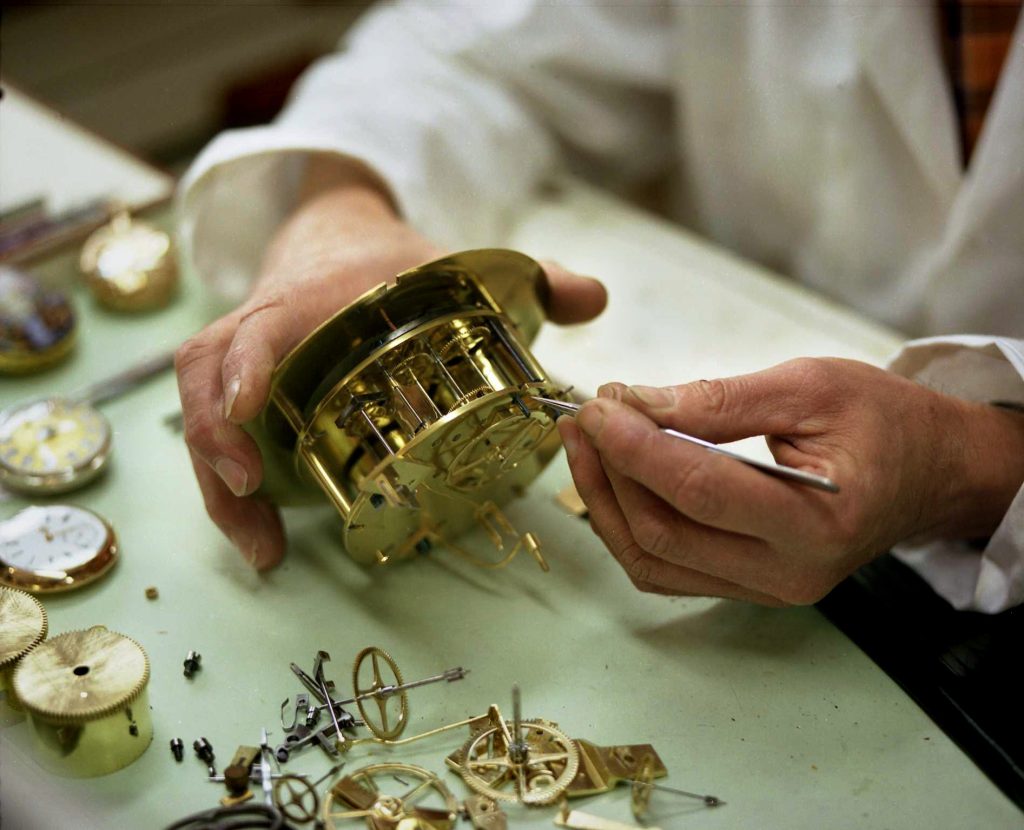
4. The Emmanuel de la Villeon Museum
At 51 rue Nationale is the only half-timbered house in the upper town. The latter houses a painting museum dedicated to the peintre Emmanuel de la Villeon.
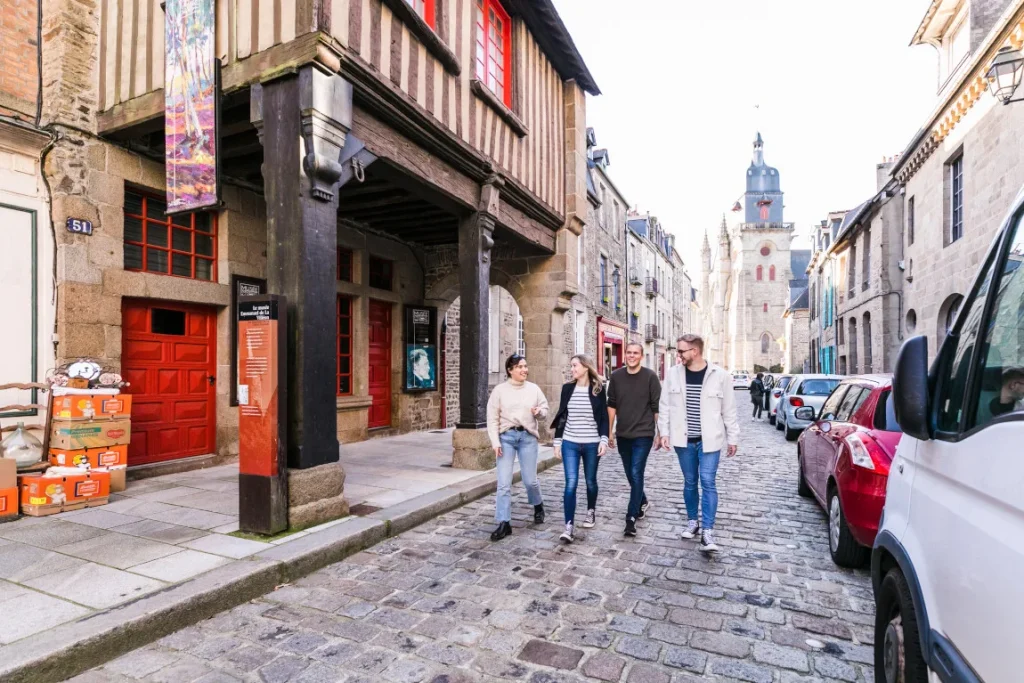
A painter from Fougères and a renowned landscape painter, de la Villéon was an avant-garde colourist, rubbing shoulders with the greatest independent painters of her time. This collection, made up of oils, pastels, gouaches, charcoals and inks, traces his journey through a selection of works. The Villéon Museum is only open during school holidays!
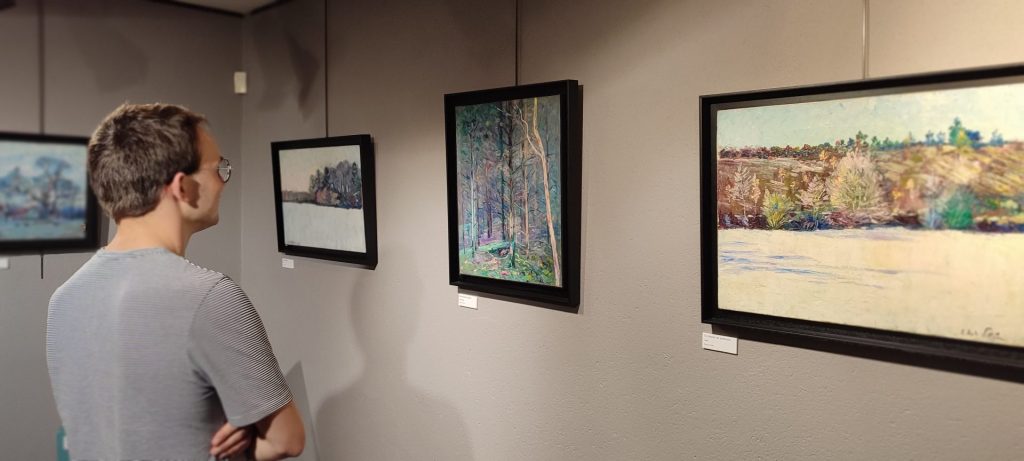
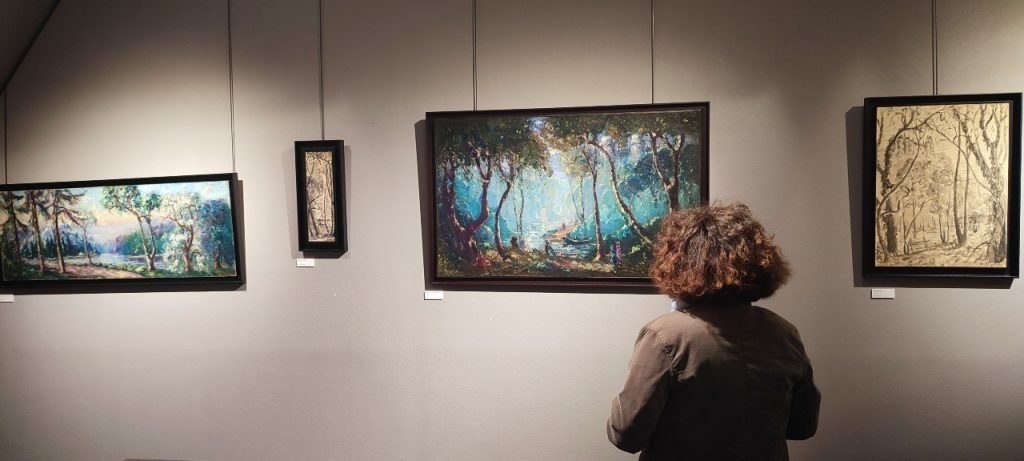

5. Saint Leonard's Church
Founded in the XNUMXth century, then rebuilt in the XNUMXth and XNUMXth centuries, the church was disoriented and enlarged in the XNUMXth century and was fitted with a portal and a rose window six meters in diameter in the Flamboyant Gothic style. The south chapel houses the oldest stained glass window (XNUMXth century) in Brittany.
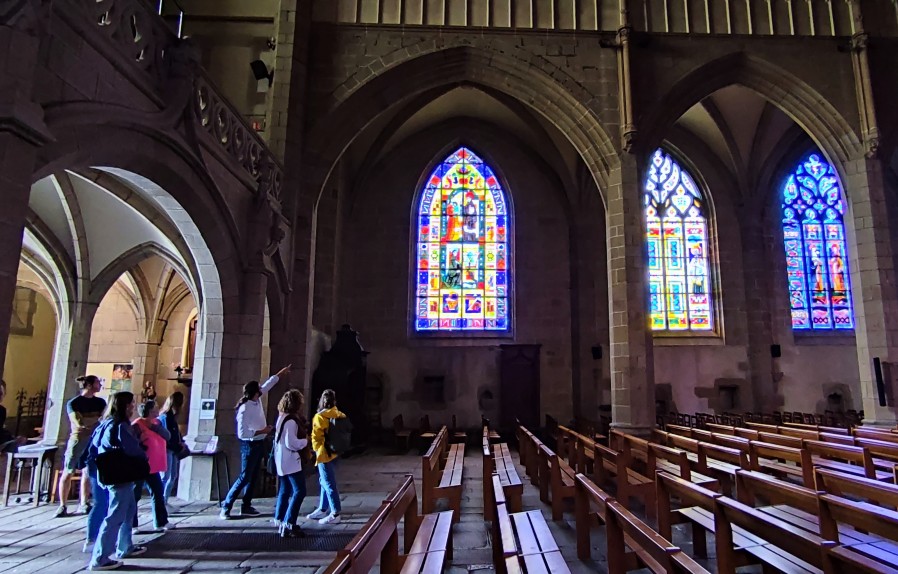
In July and August, the most daring can climb the bell tower, where the view of the lower town of Fougères is spectacular! If you are lucky enough to go there at the end of the day, you can even admire a magnificent sunset.
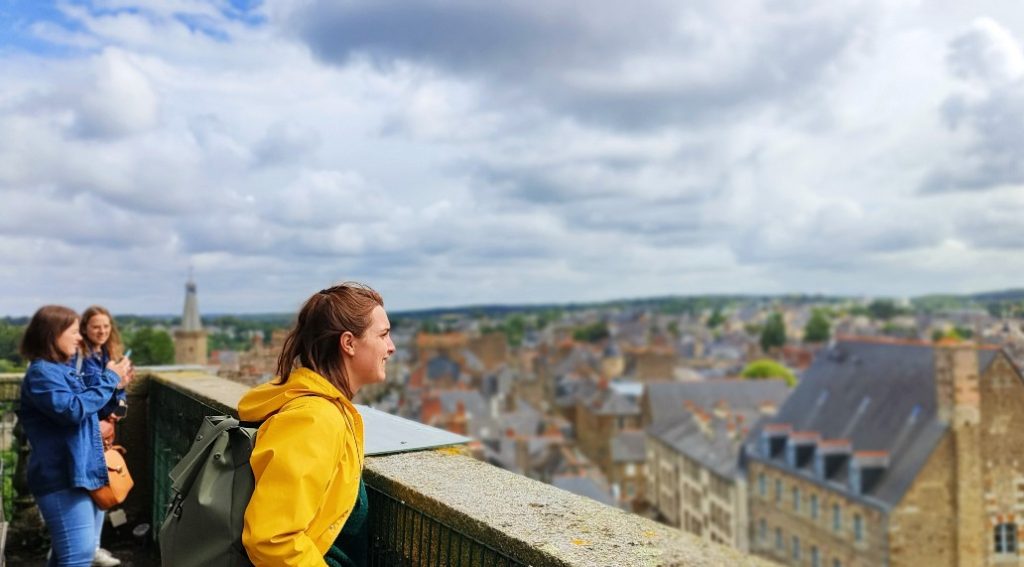
6. The Public Garden
At the end of the rue Nationale at the end of your walk in the upper town is the public Garden from the city. Arranged since the end of the 3th century. the garden is designed on XNUMX levels. From the upper part called Place aux Arbres, enjoy a panorama of the origins of the city, overlooking the castle and the medieval quarter around theChurch of St-Sulpice. Take out your smartphone it's the perfect place to take beautiful pictures
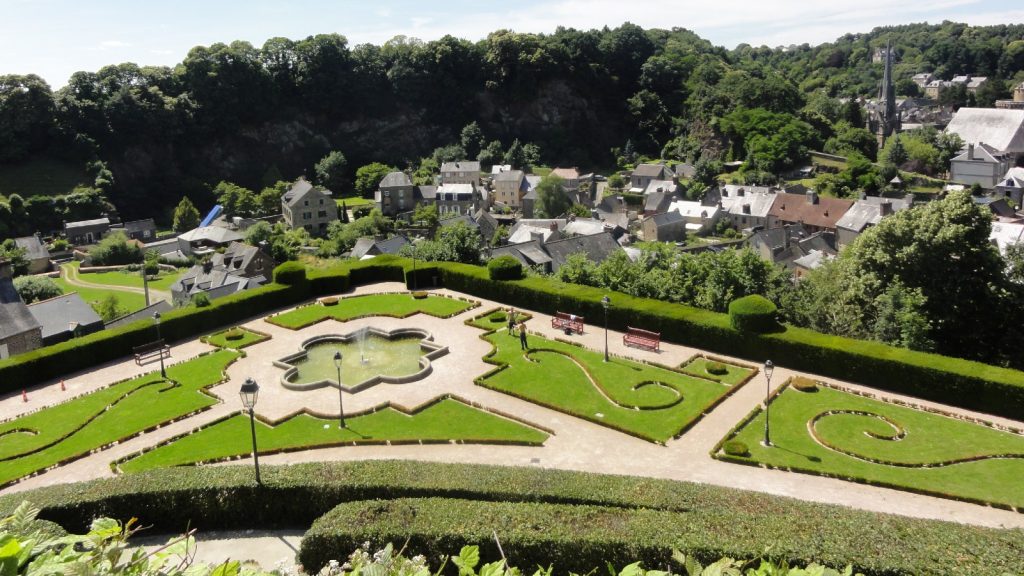
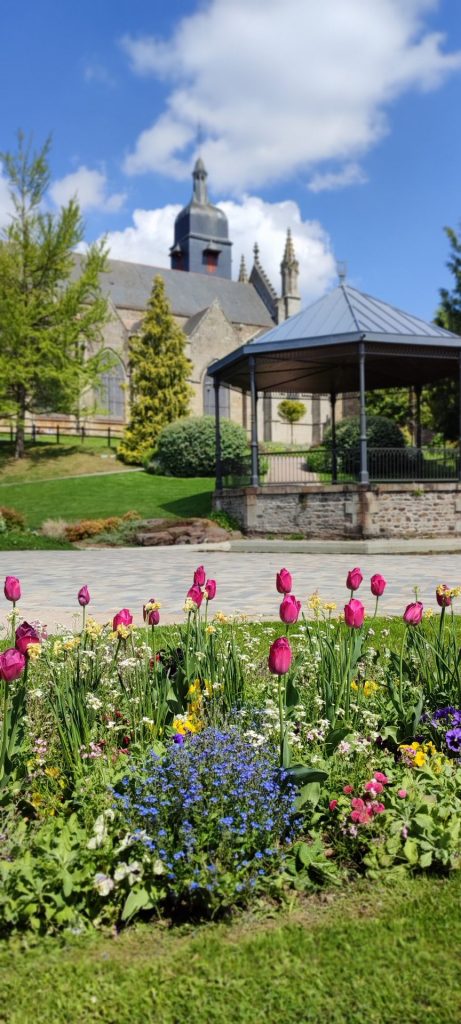
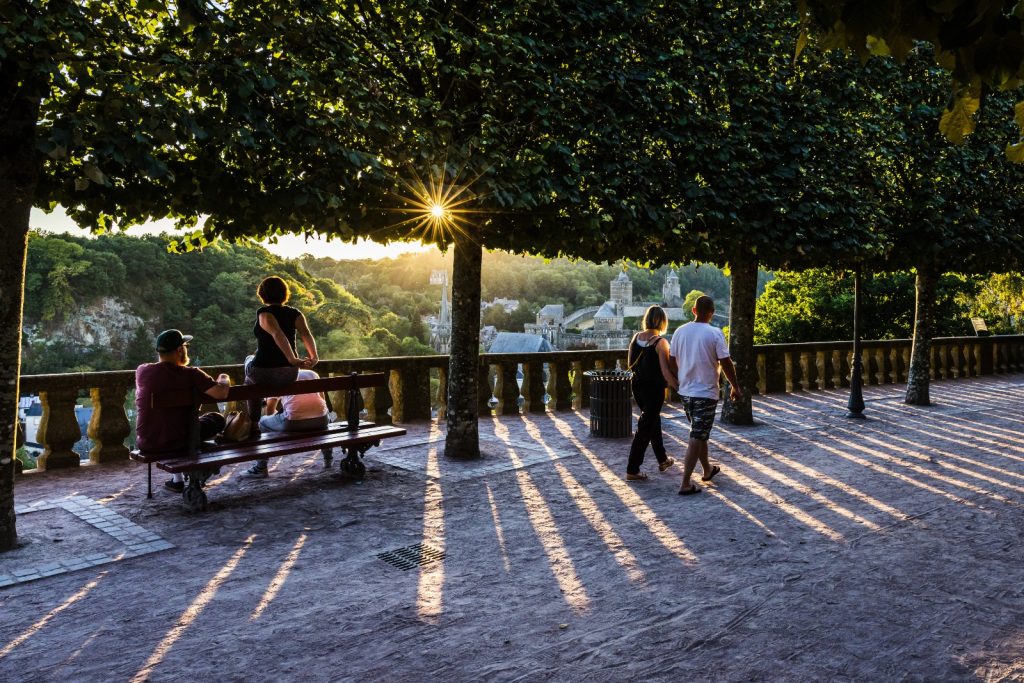
7. The Medieval Quarter
As soon as you leave the garden, the Medieval district awaits you! On the left, don't miss the old washhouses installed on the banks of the Nançon.
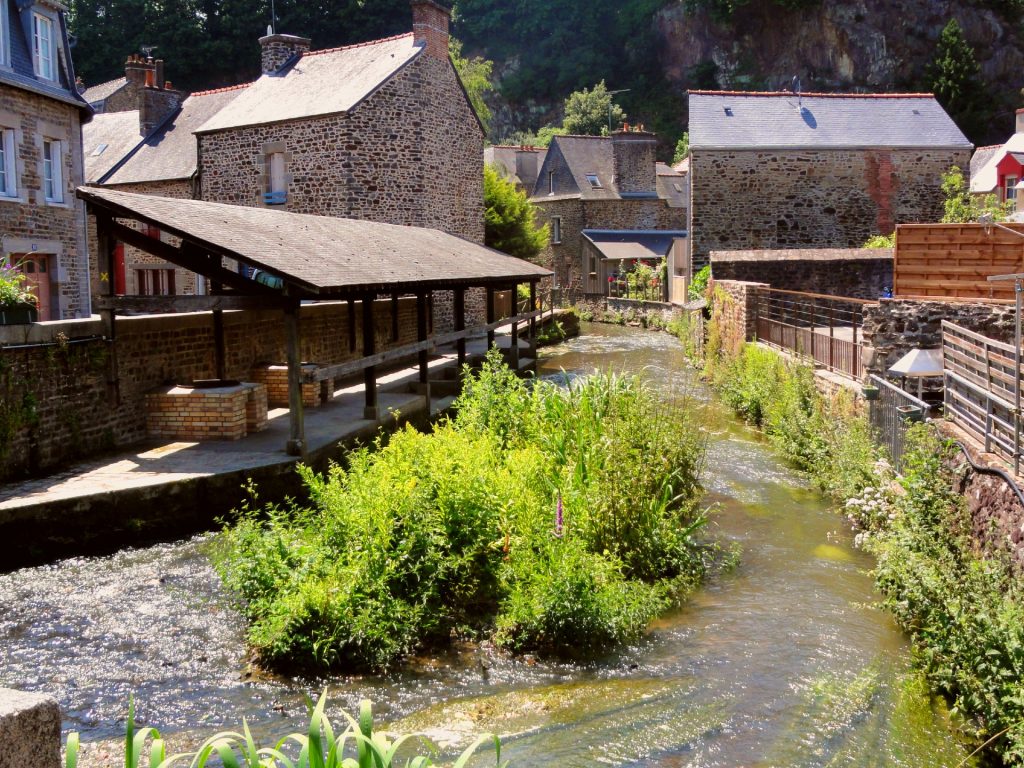
Then go back down to reach the Marchix square. With its typical half-timbered houses, it was on this square that the “Beasts with horns” market took place, essential to the craftsmanship of the tanners of Fougères.
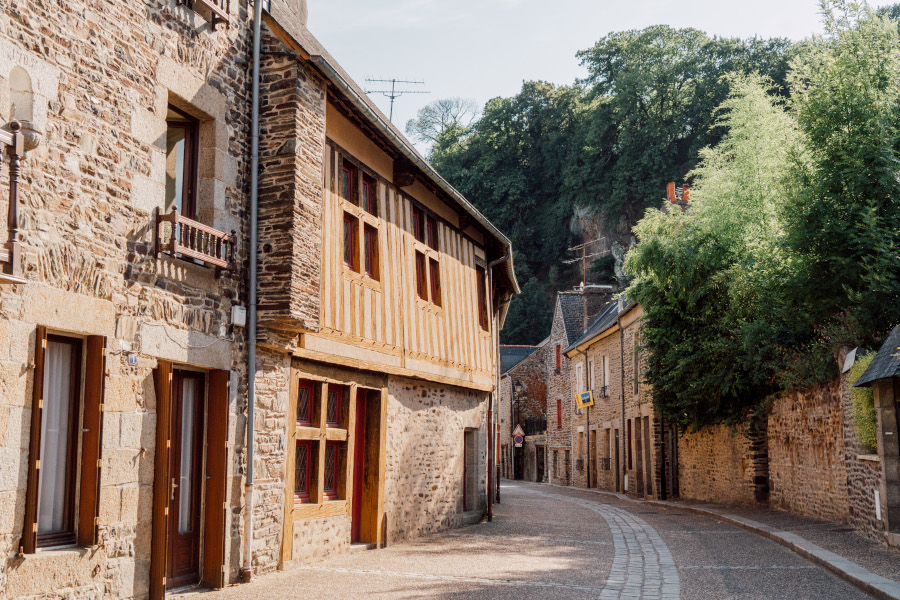
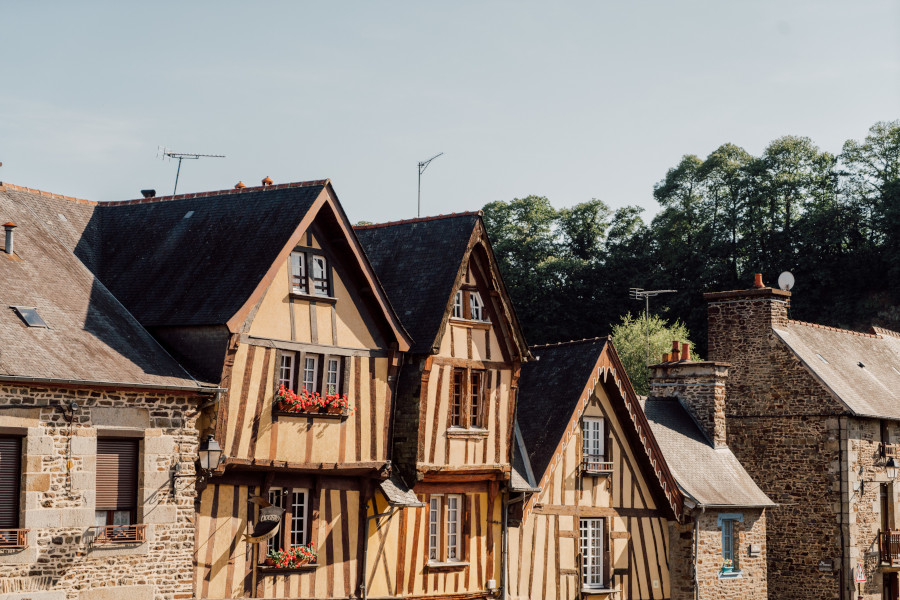
Two steps away is the Savigny house. Dating from the 1990th and XNUMXth centuries, it was carefully restored in the XNUMXs. The wide openings on the ground floor suggest a craft activity and the mullioned windows correspond to the period of construction.
8. Saint-Sulpice Church
Before crossing the Notre Dame Gate and access the castle, take a detour via Saint-Sulpice church.
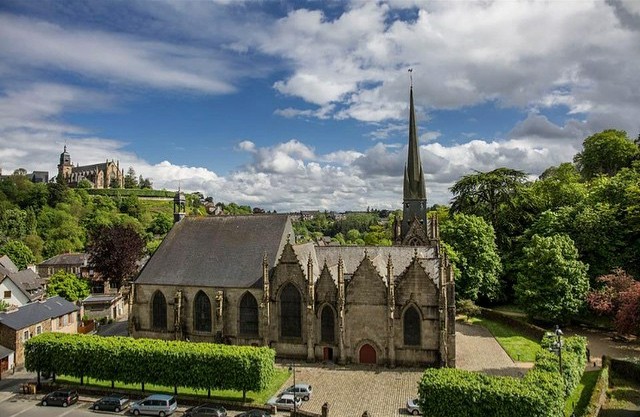
The flamboyant Gothic style building houses the two oldest medieval altarpieces in Brittany as well as a sumptuous Rocaille style marble master hotel. The stained glass windows of the church also have a particularity: one of them reveals the Fougères legend of the "Virgin of the Marshes" and another, dedicated to Joan of Arc, presents an originality through three characters out of step with the rest of the table. Can you find them?
9. Fougères Castle
After seeing it all along this route, the time has come, heading for the “Fabulous Chateau de Fougeres”
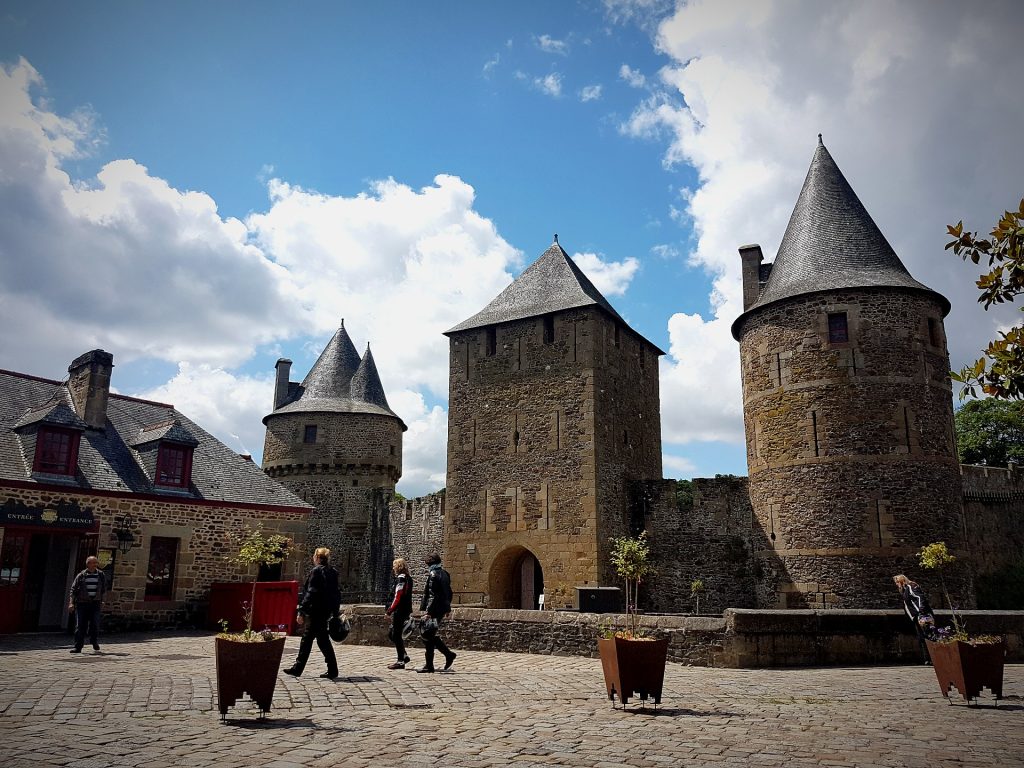
After crossing La Porte Notre-Dame, the only preserved gate of the urban wall of Fougères, go on your left to Place Pierre Symon where the entrance to the “largest medieval castle in Europe”! A must-see site in the Marches de Bretagne, the castle can be visited according to your wishes: independently with support provided, with an audio guide for detailed commentary, or with a guide depending on the time slots available during the day.
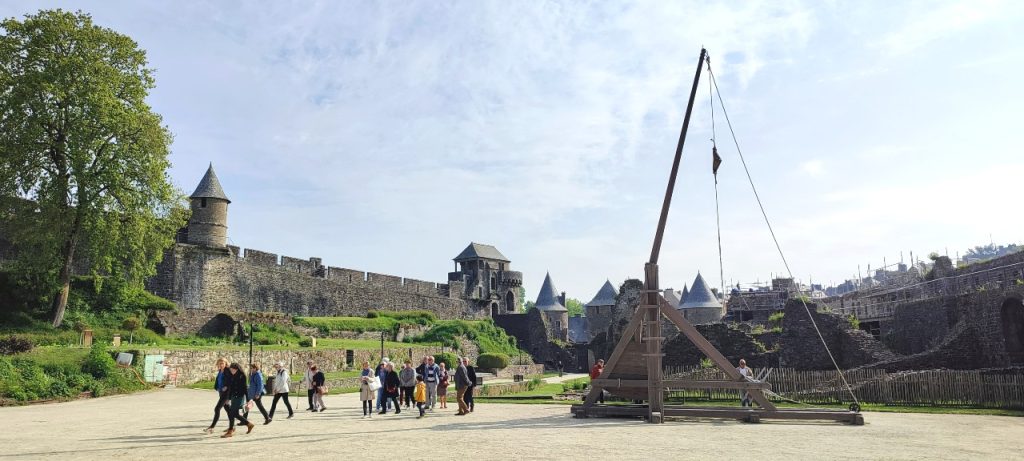
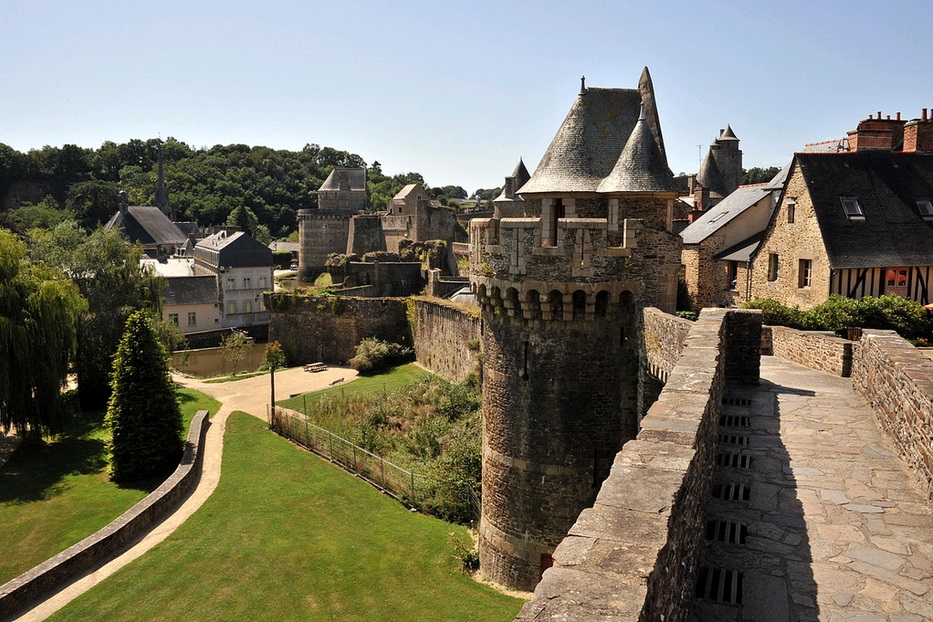

10. Le Val Nancon
A true link between the lower town and the upper town, the Val Nançon garden is laid out in a valley along the Nançon river, at the foot of the northern ramparts.
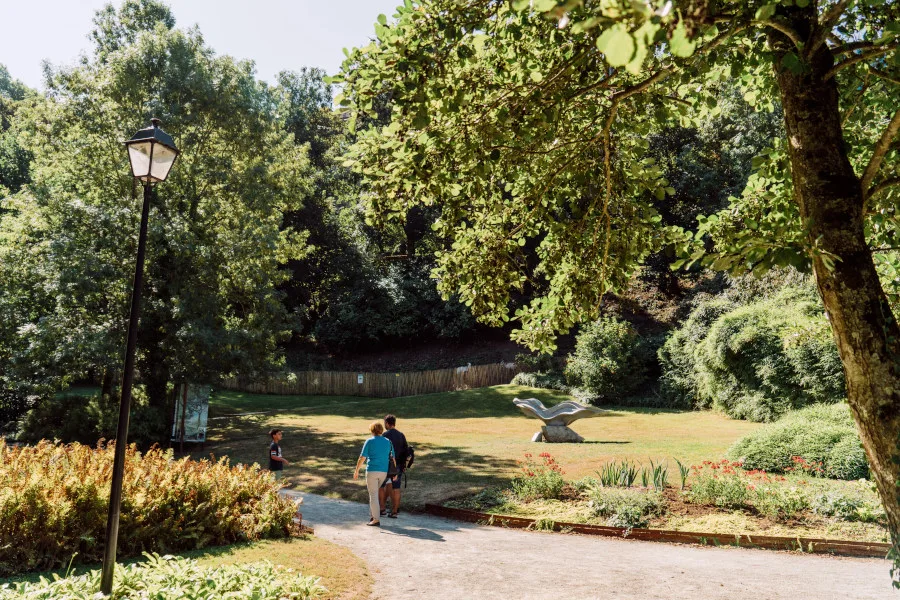
Laid out over 2 hectares, the Val Nançon is made up of a succession of gardens as varied as they are atypical: family gardens, a botanical garden, a priest's garden, a vegetable cage, etc. Combining classic and contemporary plantations, between flowers and grasses, take the time to stroll or stop for a picnic break in the shade on the landscaped areas.
11. Return to Ville-Haute
After losing a few calories in your ascent, here you are again in “Upper Town” on the spot Aristide Briand adorned with his Tribunal which takes place in a private mansion of classical architecture built in the XNUMXth century.
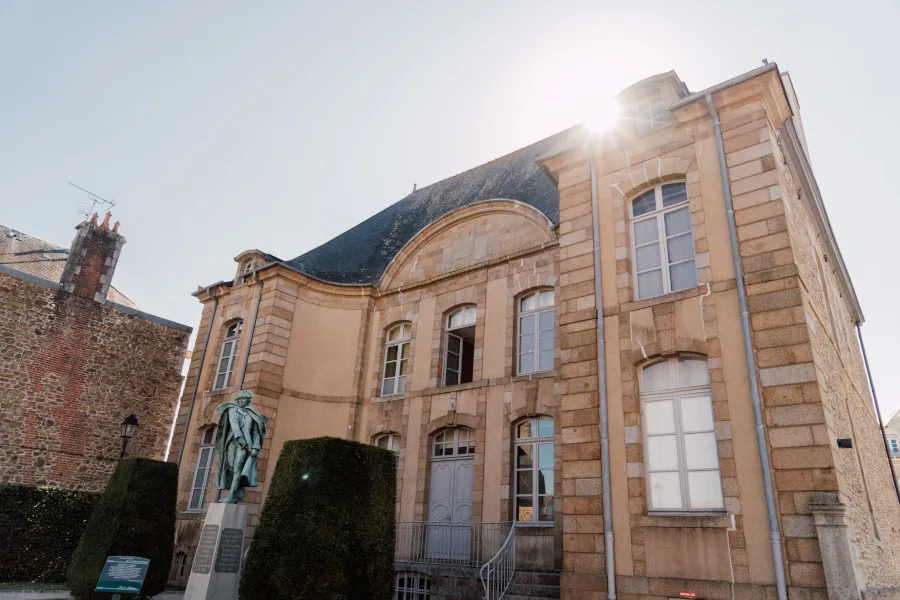
Le discovery tour of the city of art and history of Fougères is coming to an end. Although the latter focuses on the essentials, the city of Fougères still has a few small ones to offer you…

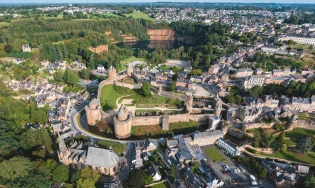


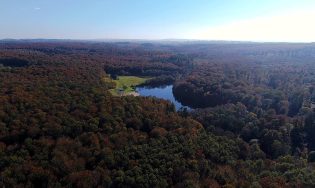
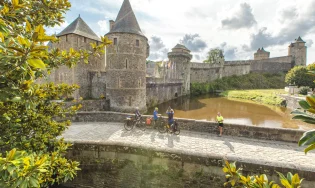
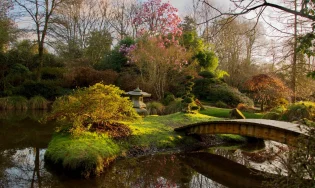







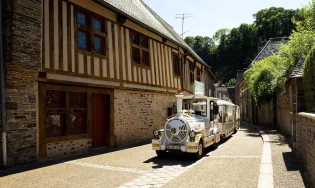
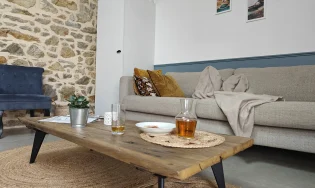

 Groups
Groups

